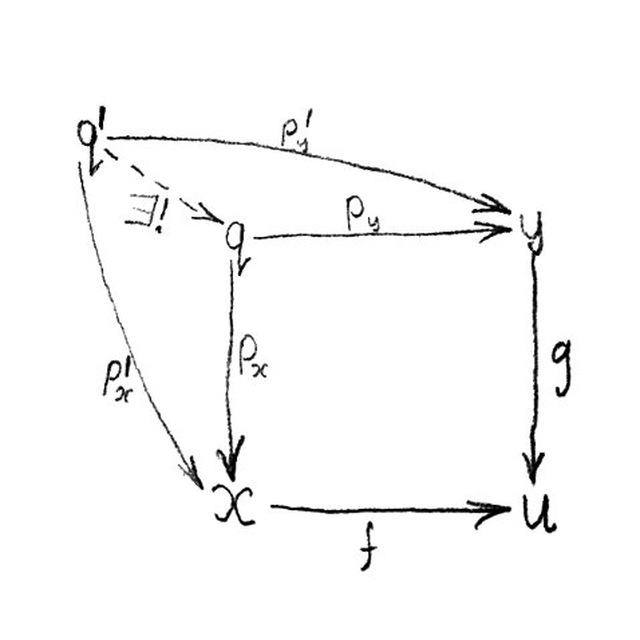EP
Size: a a a
2019 June 23
Ну давайте найду текст
ЕО
Давай
EP
For example, a military general who knows that he will be attacked from either the east or the north must divide his forces between both fronts, even if the attack will only come from one direction; thus what he has is “attack from east ⅋ attack from north”. (If he had spies out that would be able to inform him in advance where the attack was coming from so that he could concentrate his forces there, then he would instead have an additive disjunction “attack from east ⊕ attack from north”.)
EP
EP
Щяс там ещё было про &
EP
Emelian Piker (Евгений)
For example, a military general who knows that he will be attacked from either the east or the north must divide his forces between both fronts, even if the attack will only come from one direction; thus what he has is “attack from east ⅋ attack from north”. (If he had spies out that would be able to inform him in advance where the attack was coming from so that he could concentrate his forces there, then he would instead have an additive disjunction “attack from east ⊕ attack from north”.)
Вот сдесь проясняется про +
ЕО
Emelian Piker (Евгений)
Ну давайте найду текст
Мне кажется, что нельзя напрямую линейную логику проектировать в обычные вычисления. Особенно классическую линейную логику, а не интуитивисткую
NI
Мне кажется, что нельзя напрямую линейную логику проектировать в обычные вычисления. Особенно классическую линейную логику, а не интуитивисткую
Напрямую будет, попросту, некорректно.
А про именно логику, можно посоветовать Шульмана что-то типа линейная логика для интуииониста.
Если интересно, вспомню точнее название и ссылка найдётся с ходу, скорее всего.
А про именно логику, можно посоветовать Шульмана что-то типа линейная логика для интуииониста.
Если интересно, вспомню точнее название и ссылка найдётся с ходу, скорее всего.
EP
Additive conjunction (“with”) 1 & 2 has the neutral element T. It
expresses that only one of the actions described by 1 and 2 will be
performed. But we can deduce or anticipate from an environment which
of them will be performed. This formula can be considered as an analogy
with the statements if-then-else and case in programming languages.
Somethimes it is called external nondeterminism (dependent choice);
Oℕ
Вопрос в семантике мультипликативной дизъюнкции?
NI
Изначально, вопрос в том, есть ли строгое определение "аддитивного" и "мультипликативного".
Вопрос начался с бинарных операций.
Вопрос начался с бинарных операций.
EP
Бартоз называет Either a b почемуто суммой, это не мультипликативная дизюнкция случайно ? Мне кажется тут путаница
ЕО
Ну Either a b это прямая сумма
NI
Emelian Piker (Евгений)
Бартоз называет Either a b почемуто суммой, это не мультипликативная дизюнкция случайно ? Мне кажется тут путаница
Копроизведение (обычный интуиционистский вариантный тип) принято называть суммой.
Oℕ
Either - это декартова сумма, она обладает большей силой, чем линейные варианты дизъюнкции
EP
Emelian Piker (Евгений)
Additive conjunction (“with”) 1 & 2 has the neutral element T. It
expresses that only one of the actions described by 1 and 2 will be
performed. But we can deduce or anticipate from an environment which
of them will be performed. This formula can be considered as an analogy
with the statements if-then-else and case in programming languages.
Somethimes it is called external nondeterminism (dependent choice);
Вот про case. В haskell case какбы некомутативен если его попытаться представить как оператор. Можно даже написать бинарную функцию которая собирает свой case
EP
Ну Either a b это прямая сумма
А мультипликативная дизюнкция это что тогда ?
Oℕ
Некоммутативность хаскельного кейс исчезает, если говорить про паттерн матчинг типа сумы
Oℕ
Т.е. если сузить паттернматчинг до суммы морфизмов, он будет коммуиативен
EP
Некоммутативность хаскельного кейс исчезает, если говорить про паттерн матчинг типа сумы
Ну да, а если говорить про обычный, nо он адитивен чтоли ? Тоесть это некомутативно и аддитивно ?



